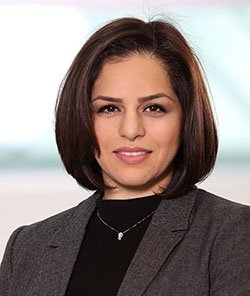The David Sobey Retailing Centre is very pleased to award funding of $10,000 each to Sobey School of Business researchers Hadi Eslami, Bahareh Mansouri and Ethan Pancer.
Founded in 2014, thanks to a visionary and generous gift by the late Dr. David F. Sobey, CM, DComm’91, Chair Emeritus of Sobeys Inc., the David Sobey Retailing Centre is a leading expert and partner in the retail sector, shaping the future of retail through research, innovation and education.
“Funding research in areas that are vital to the future of retail is a key priority for the David Sobey Retailing Centre” says Dr. Ramesh Venkat, Director of the David Sobey Retailing Centre, “Canada’s retail sector accounts for 15.6 per cent of Canada’s GDP and employs the most people of all sectors in our economy. An innovative, thriving and competitive retail sector is a vital contributor to Canada’s economy”.
Highlights of this new research are:
Hadi Eslami
Title: Buy Now Pay Later (BNPL) Adoption and Shareholder Value of Retailers
Description: While retailers have been at the forefront of adopting the Buy Now Pay Later (BNPL) payment method/system, we have limited knowledge regarding the performance effects of this adoption. In this research, we will examine how the adoption of BNPL influences retailers’ shareholder value performance across multiple consumer segments.
Bahareh Mansouri
Title: Towards sustainable urban freight planning: the integration of micro-distribution centers into the urban transportation network
Description: This research project addresses the pressing challenges faced by the retail and service sectors in the context of urban freight transportation. It focuses on strategically integrating the Urban Micro-distribution Centers (UMCs), fed by the Urban Distribution Centers (UDCs), into the urban logistics network planning. This study employs optimization models, drawing from the Hub Location Problem (HLP) and the Location-Routing Problem (LRP) to minimize operational costs, reduce carbon footprints, and enhance customer satisfaction.
Ethan Pancer
Title: Consumer Responses to Product Innovation from Generative AI
Description: This project investigates how people perceive products created by generative AI compared to those made by humans, exploring the impact of a product's origin on its perceived value, trustworthiness, and acceptability. The findings aim to guide retailers in industries at the crossroads of technology and creativity in developing strategies that align with consumer attitudes in an increasingly AI-integrated market.



































